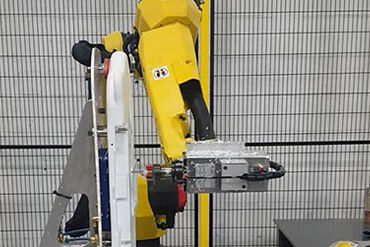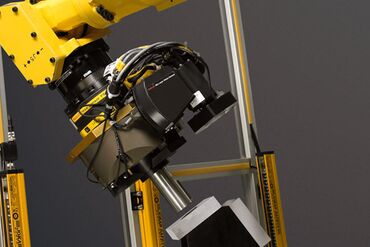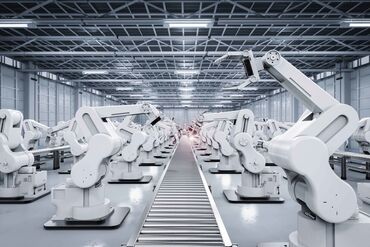Robot Grippers
Aug 22, 2017
The end of arm tooling for robots, also known as the robot gripper, is one of the most important parts of the robot system. The right type of gripper is imperative as the end-of-arm tool (EOAT) comes in direct contact with the product. There are four types of robotic grippers to choose from: vacuum grippers, pneumatic grippers, hydraulic grippers, and servo-electric grippers.

Robot grippers are the physical interface between a robot arm and the work piece. This end-of-arm tooling (EOAT) is one of the most important parts of the robot. One of the many benefits of material handling robots is the reduction of part damage. A gripper comes in direct contact with your product, so it’s important to choose the right type of gripper for your operation to prevent breakage, delays, or accidents.
Types of Robot Grippers
There are four types of robotic gripper types: vacuum grippers, pneumatic grippers, hydraulic grippers and servo-electric grippers. Manufacturers choose grippers based on which handling application is required and the type of material in use.
Vacuum Grippers
The vacuum gripper has been the standard EOAT in manufacturing because of its high level of flexibility. This type of robot gripper uses a rubber or polyurethane suction cup to pick up items. Some vacuum grippers use a closed-cell foam rubber layer, rather than suction cups, to complete the application.
Vacuum grippers are commonly used for flat objects, such as boxes and wood, and are beneficial if you want to arrange items on pallets.
Pneumatic Grippers
The pneumatic gripper is popular due to its compact size and light weight. It can easily be incorporated into tight spaces, which can be helpful in the manufacturing industry. Pneumatic robot grippers can either be opened or closed, earning them the nickname “bang bang” actuators, because of the noise created when the metal-on-metal gripper operates.
Pneumatic grippers can be used to hold and lift heavy objects.
Hydraulic Grippers
The hydraulic gripper provides the most strength and is often used for applications that require significant amounts of force. These robotic grippers generate their strength from pumps that can provide up to 2000psi. Although they are strong, hydraulic grippers are messier than other grippers due to the oil used in the pumps. They also may need more maintenance due the gripper being damaged because of the force used during the application.
Servo-Electric Grippers
The servo-electric gripper appears more and more in industrial settings, due to the fact that it is easy to control. Electronic motors control the movement of the gripper jaws. These grippers are highly flexible and allow for different material tolerances when handling parts. Servo-electric grippers are also cost effective because they are clean and have no air lines.
Servo-electric grippers can be used for machine tending and pick and place applications.
Find the Right Gripper with Robots.com
Robots.com is an experienced material handling robot integrator. We are able to not only help you choose the right type of gripper, but we can also customize the size and shape needed to fit your specific product needs. Choosing the proper gripper is essential to ensuring successful automation applications. For more information, contact Robots.com today at 877−762−6881 or by filling out our contact form.
Related Articles
You might be also interested in:

- Featured
Latest Advancements in Material Cutting Robotics
Read about the latest technological advancements in robotic material cutting.

- Featured
Emerging 3D Vision Technologies for Industrial Robots
Learn about the emerging 3D vision technology that businesses are using for industrial robot applications.

- Featured
Most Popular Industrial Robotic Applications for 2021 and Projections
Explore the most popular application trends of 2021 and what to expect in the future.
Let's talk!
Request your quick quote today.
